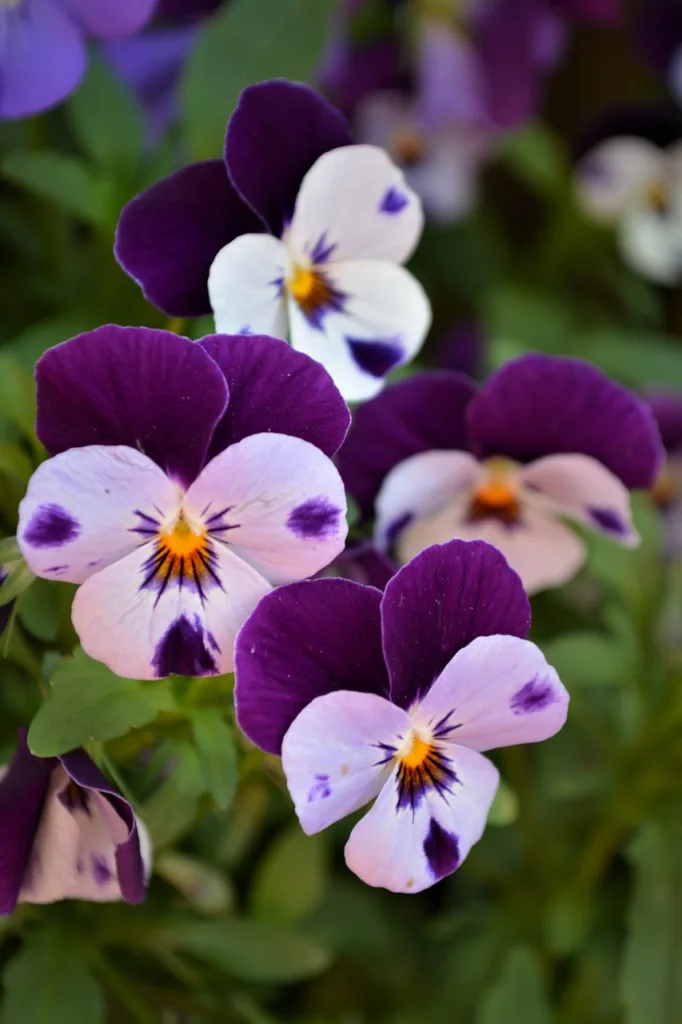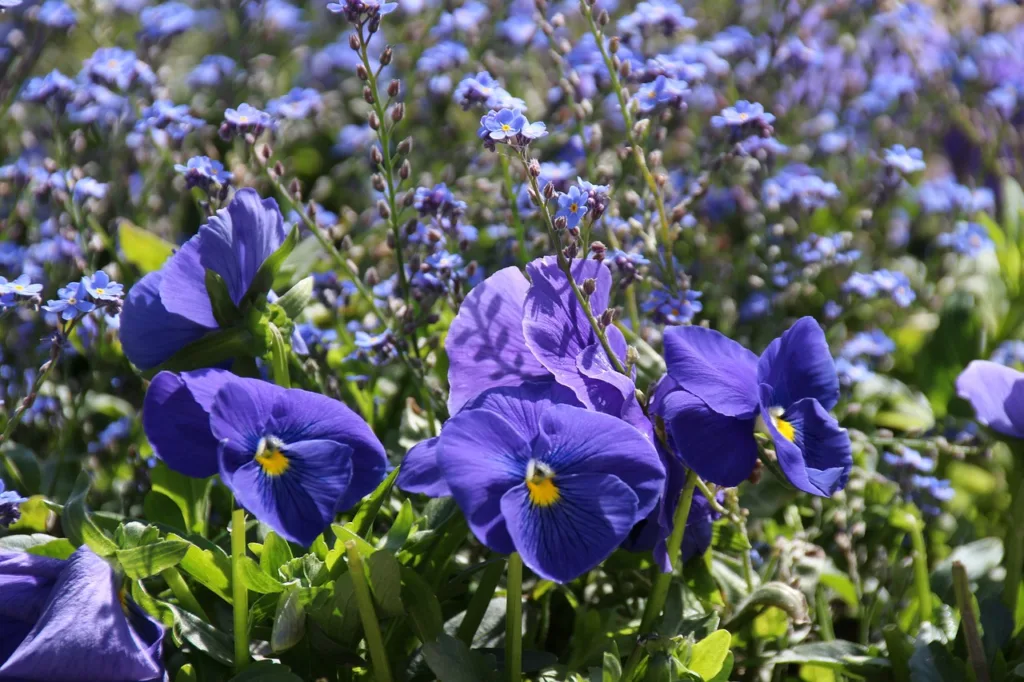Are you looking to add a splash of color and charm to your garden? Look no further than wishbone flowers! With their delicate blooms and beautiful hues, wishbone flowers are a delightful addition to any garden or flowerbed.
Wishbone flowers, scientifically known as Torenia, are flowering plants appreciated for their attractive and distinctive blooms. These annual or perennial herbaceous plants belong to the Linderniaceae family. Originating from various regions including Asia, Africa and the Americas, wishbone flowers have become a popular ornamental choice in gardens and containers.
The main feature of wishbone flowers are their unique tubular flowers, which exhibit a distinctive “wishbone” shape, giving rise to their common name. These flowers come in many colors, including blue, violet, pink and yellow. Wishbone flowers generally bloom from late spring to early autumn, adding vibrant and cheerful color to shaded areas.
In terms of cultivation, wishbone flowers prefer partial to complete shade and thrive in moist, well-drained soil. They are often used in gardens, borders, hanging baskets and containers because of their compact size and colorful flowers.
| Aspect | Description |
|---|---|
| Scientific Name | Torenia |
| Common Name | Wishbone Flower |
| Family | Linderniaceae |
| Native to | Asia, Africa, and the Americas |
| Plant Type | Annual or perennial herbaceous plant |
| Bloom Time | Late spring to early fall |
| Flower Characteristics | Small, tubular flowers with a distinctive “wishbone” shape |
| Flower Colors | Various, including blue, purple, pink, and yellow |
| Size | Height: 6-12 inches (15-30 cm) |
| Light Requirements | Partial shade to full shade |
| Soil Type | Moist, well-draining soil |
| Watering Needs | Keep soil consistently moist, avoid waterlogged conditions |
| USDA Hardiness Zone | Typically grown as an annual (varies by species) |
| Uses | Gardens, borders, hanging baskets, and containers |
Choosing the Right Location
Like most flowering plants, wishbone flowers thrive in specific growing conditions. Before planting, it’s important to choose a suitable location in your garden. Here are some key considerations:
Sunlight Requirements
Wishbone flowers prefer partial shade to full sun exposure. This means they thrive in areas that receive 4-6 hours of direct sunlight each day. However, in hotter regions, providing some afternoon shade can help prevent wilting and scorching of the delicate blooms.
Soil Conditions
Good soil preparation is crucial for the health and growth of wishbone flowers. These plants do best in well-draining soil with a slightly acidic to neutral pH level between 5.5 and 7.0. If your soil tends to be heavy or clay-like, consider adding organic matter such as compost or peat moss to improve drainage.
Planting Wishbone Flowers
Once you’ve selected the perfect spot, it’s time to get your wishbone flowers in the ground. Follow these steps for successful planting:
Preparing the Soil
Before planting, loosen the soil in the desired area using a garden fork or tiller. Remove any weeds or rocks that may hinder the growth of the wishbone flowers. Add organic matter to improve soil texture and fertility.
Spacing
Wishbone flowers should be spaced approximately 8-10 inches apart to allow for adequate air circulation and prevent overcrowding. This spacing ensures that each plant has enough room to grow and show off its beautiful blooms.
Planting Depth
Dig a hole that is just deep enough to accommodate the root ball of the wishbone flower. Gently place the plant in the hole and backfill with soil, ensuring that the top of the root ball is level with the surrounding soil. Lightly press down on the soil to secure the plant in place.
Watering
After planting, thoroughly water the wishbone flowers to help settle the soil around the roots. Keep the soil consistently moist but not waterlogged. As a general rule, aim to provide about 1 inch of water per week through a combination of rainfall and supplemental irrigation.
Mulching
Applying a layer of mulch around the base of the wishbone flowers can provide several benefits.Mulch helps retain soil moisture, inhibit weed growth and regulate soil temperature. Use organic mulch such as wood chips or straw, and avoid piling it up against the stems of the plants, as this can lead to rot or pests.

Watering and Fertilizing
Proper watering and fertilizing are essential for promoting healthy growth and abundant blooms in wishbone flowers. Let’s explore the best practices for these crucial tasks:
Watering
Wishbone flowers prefer consistently moist soil, but overwatering can be detrimental. Check the moisture level in the soil by inserting your finger approximately an inch deep. If it looks dry, it’s time to water.
When watering, aim for the base of the plant to prevent wetting the leaves, as this can lead to fungal diseases. Consider using a drip irrigation system or soaker hose to deliver water directly to the roots.
Fertilizing
Feeding wishbone flowers with a balanced fertilizer can provide the nutrients they need for healthy growth and vibrant blooms. Apply a slow-release granular fertilizer at planting time, following the manufacturer’s instructions.
For established plants, a monthly application of a water-soluble fertilizer can help sustain their growth throughout the growing season.
Pruning and Deadheading
To keep your wishbone flowers looking their best and encourage continuous blooming, regular pruning and deadheading are necessary. Here’s how to do it:
Pruning
Pruning wishbone flowers helps maintain their shape and prevents them from becoming leggy. After the initial flush of blooms, use clean, sharp pruning shears to trim back any straggly or overgrown stems. Make the cut just above a leaf node to stimulate new growth.
Deadheading
Deadheading, or removing spent blooms, not only improves the appearance of wishbone flowers but also stimulates the production of new flowers.
Simply pinch off or cut away the faded flowers at the base of the stem. Regular deadheading during the growing season will ensure a continued display of vibrant flowers.
Pests and Diseases
While wishbone flowers are generally resilient, they are susceptible to certain pests and diseases. By keeping an eye out for early signs and taking preventive measures, you can protect your plants and keep them healthy:
Common Pests
- Aphids: These tiny insects suck the sap from the leaves and stems. Use insecticidal soap or a strong jet of water to remove them.
- Slugs and snails: These insects can eat leaves and flowers. Put up beer traps or use copper barriers to stop them.
- Whiteflies: These small, winged insects cluster on the undersides of leaves and weaken the plant. Use yellow sticky traps to control their population.
Common Diseases
- Powdery Mildew: This fungal infection appears as a white, powdery layer on leaves. To prevent its spread, improve air circulation and avoid watering from above.
- Gray Mold: This disease causes gray or brown fuzzy patches on the flowers and foliage. Remove infected plant parts and ensure proper spacing to reduce humidity.
Conclusion
Congratulations! You are now equipped with the knowledge and techniques to care for and grow wishbone flowers successfully. Remember to choose a suitable location, provide proper watering and fertilization, and engage in regular pruning and deadheading.
With a little love and attention, your wishbone flowers will reward you with their stunning blooms and vibrant colors. So go ahead, plant some wishbone flowers, and watch your garden come alive with their enchanting beauty!

FAQS
- Why is it called a wishbone flower?
- Named for the distinctive shape of its tubular blooms, resembling a wishbone.
- Is Wishbone Flower indoor?
- While wishbone flowers can be grown indoors, they generally thrive outdoors in gardens, containers, or hanging baskets.
- How do you take care of a wishbone flower?
- Light: Prefers partial to full shade.
- Watering: Keep soil consistently moist, avoiding waterlogging.
- Soil: Moist, well-draining soil.
- Temperature: Suited for warm conditions.
- Is Torenia a sun or shade?
- Torenia, or wishbone flower, prefers partial to full shade and thrives in shaded garden areas.

